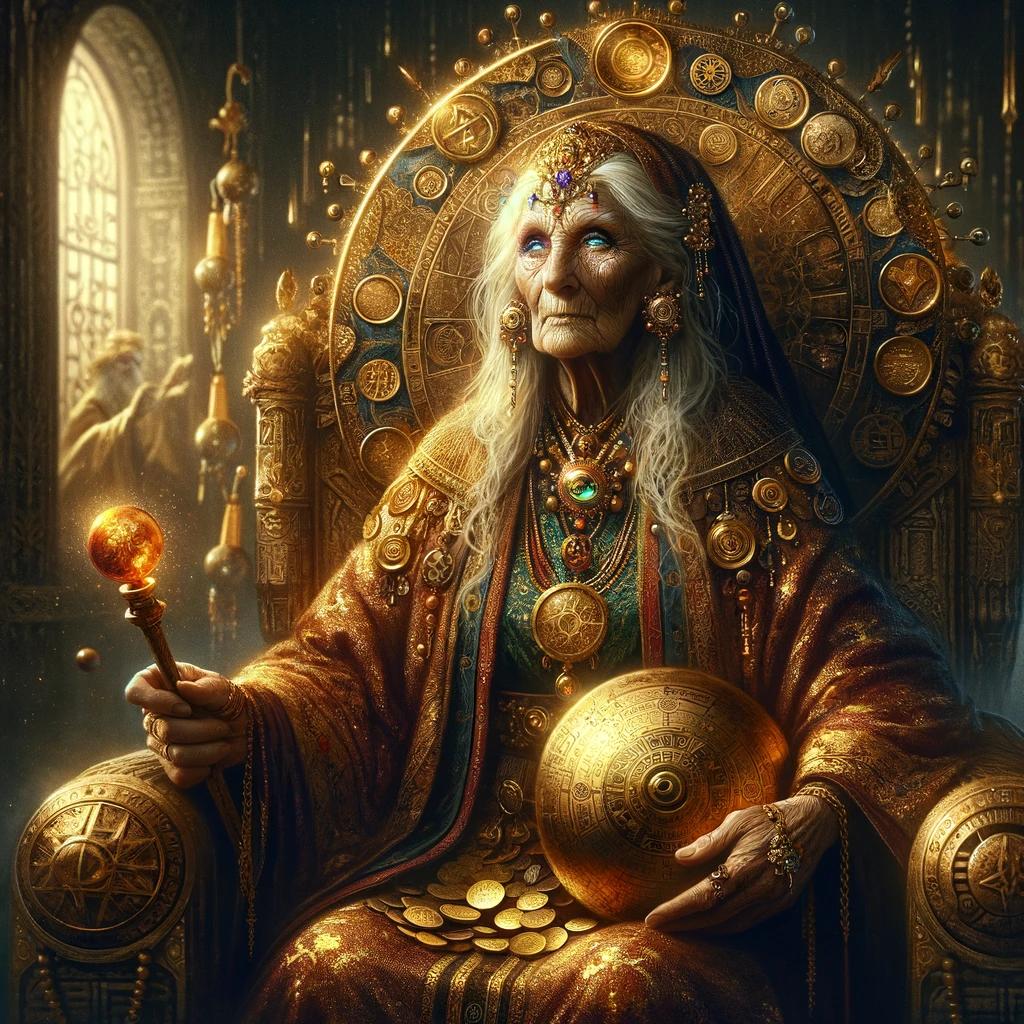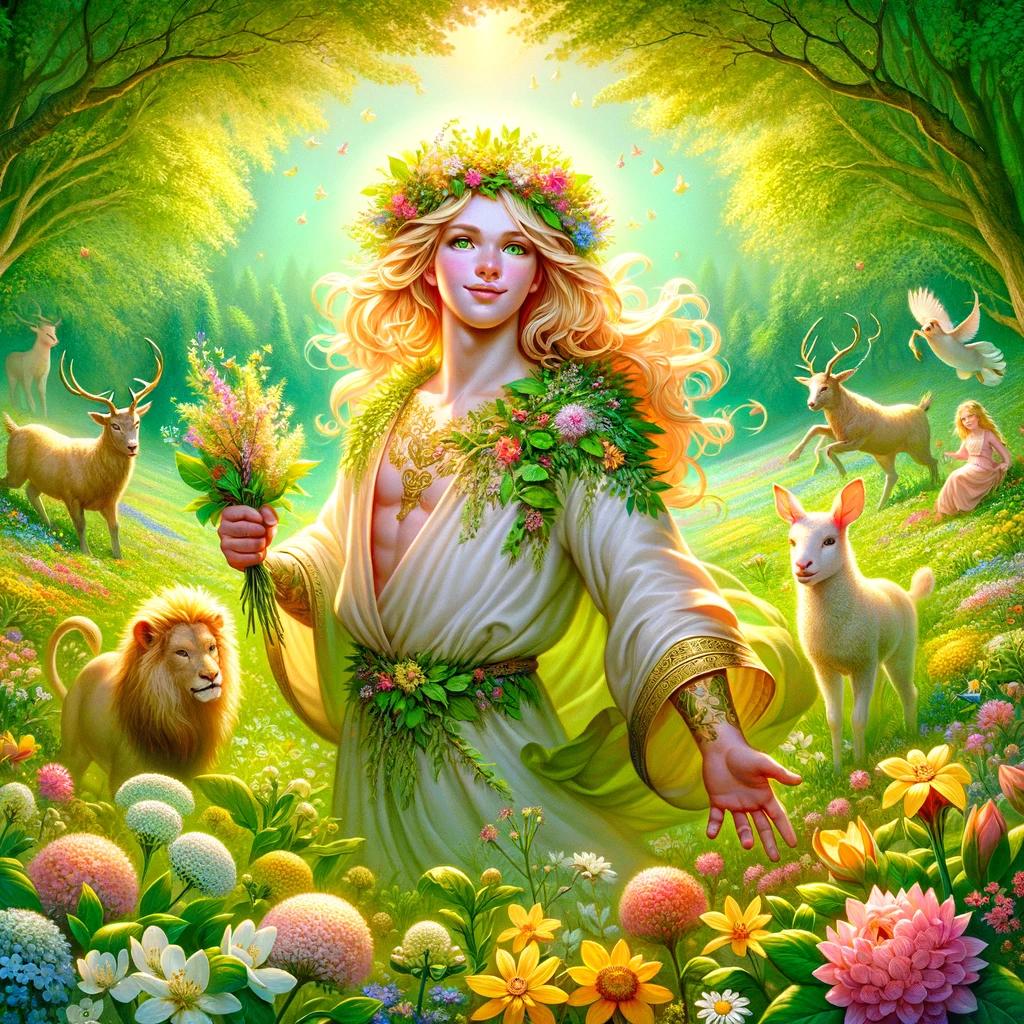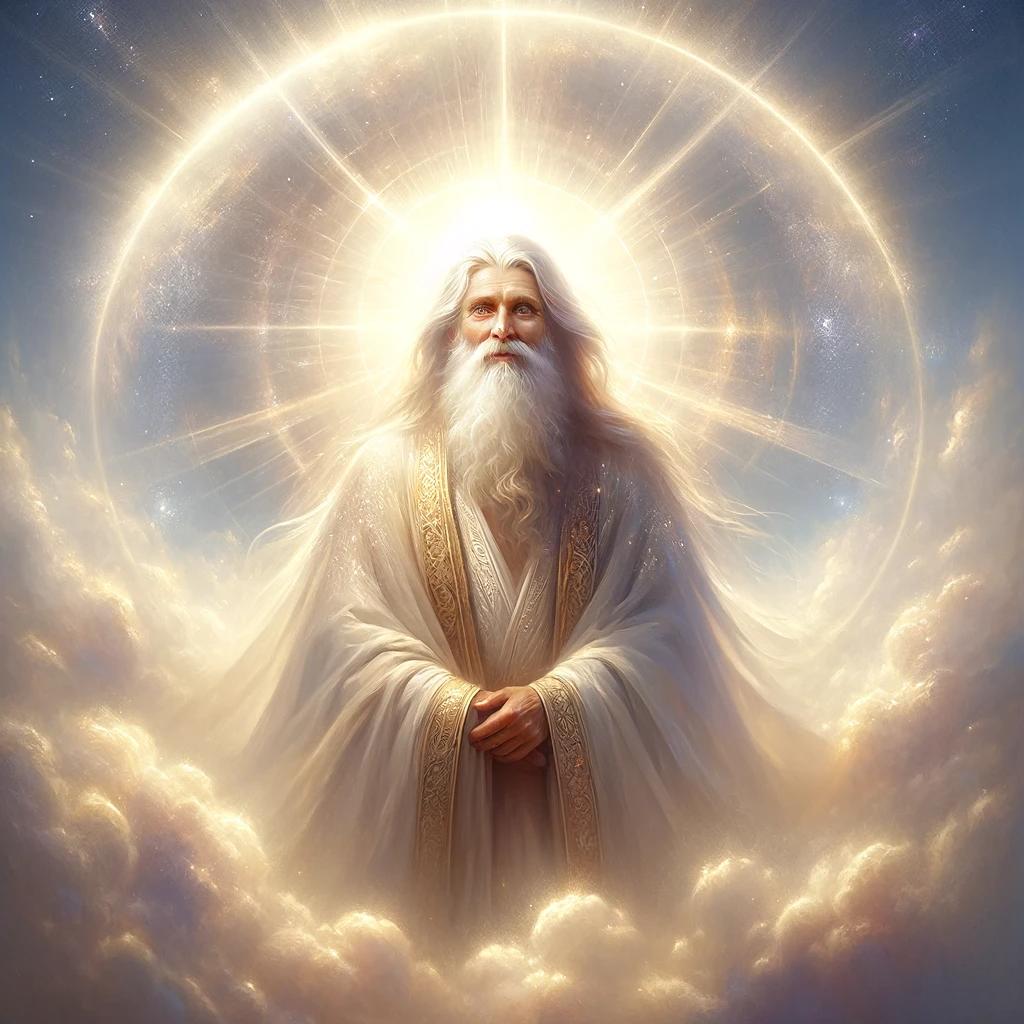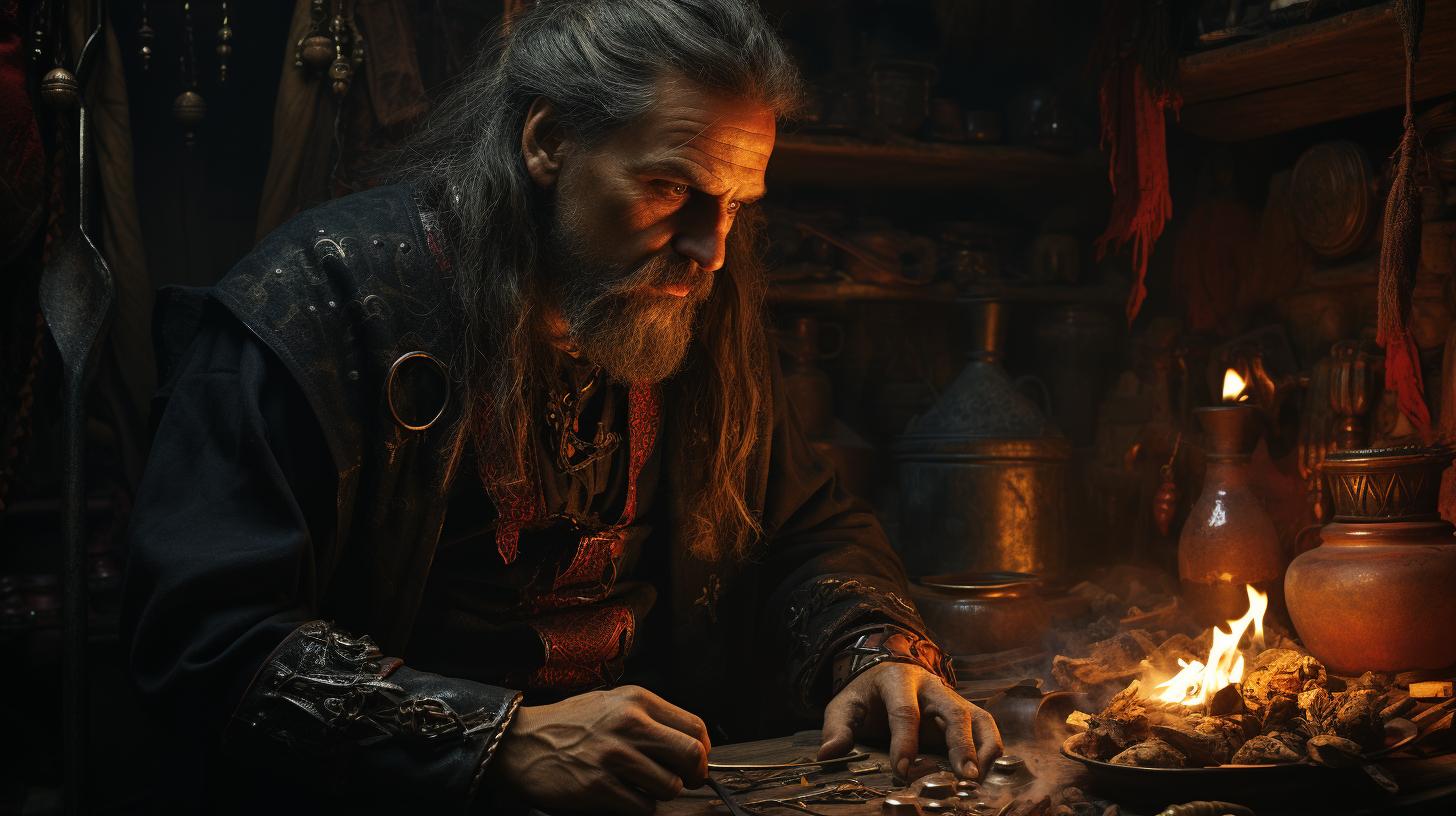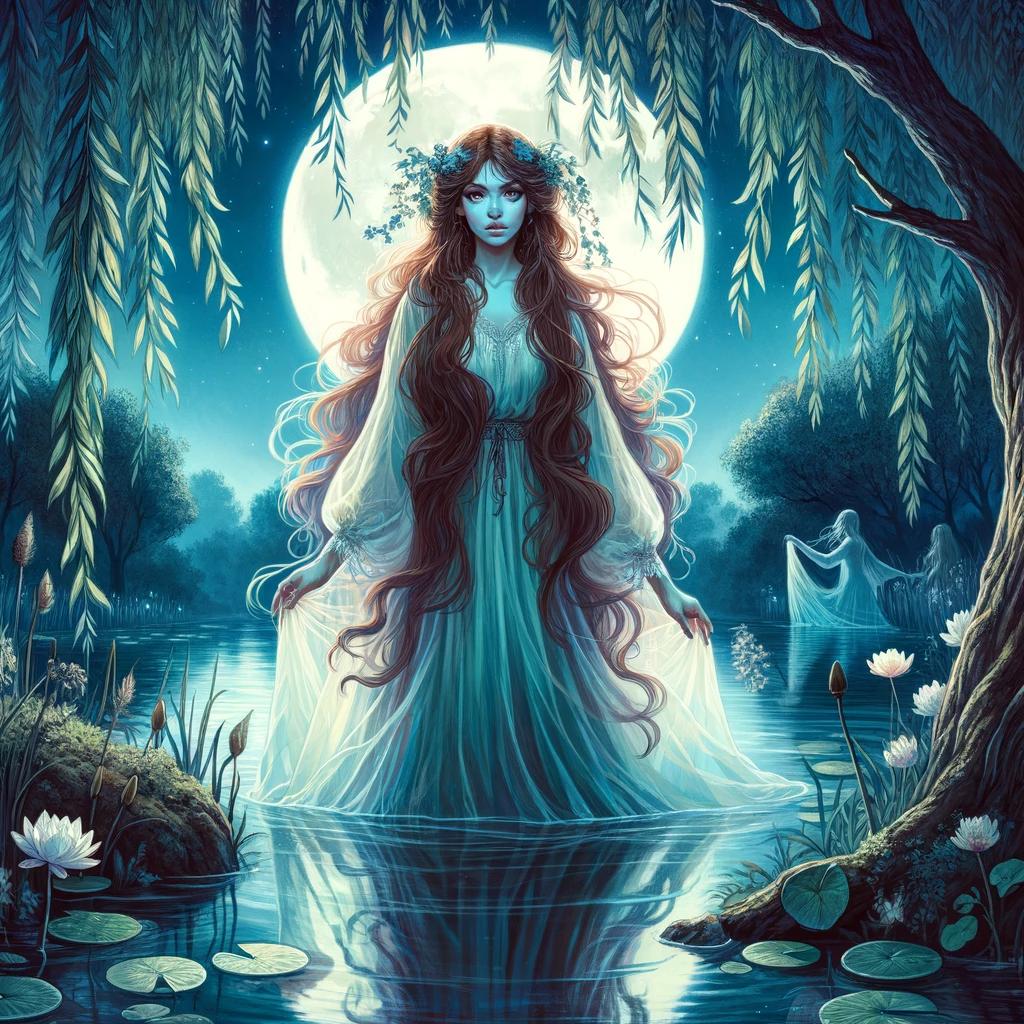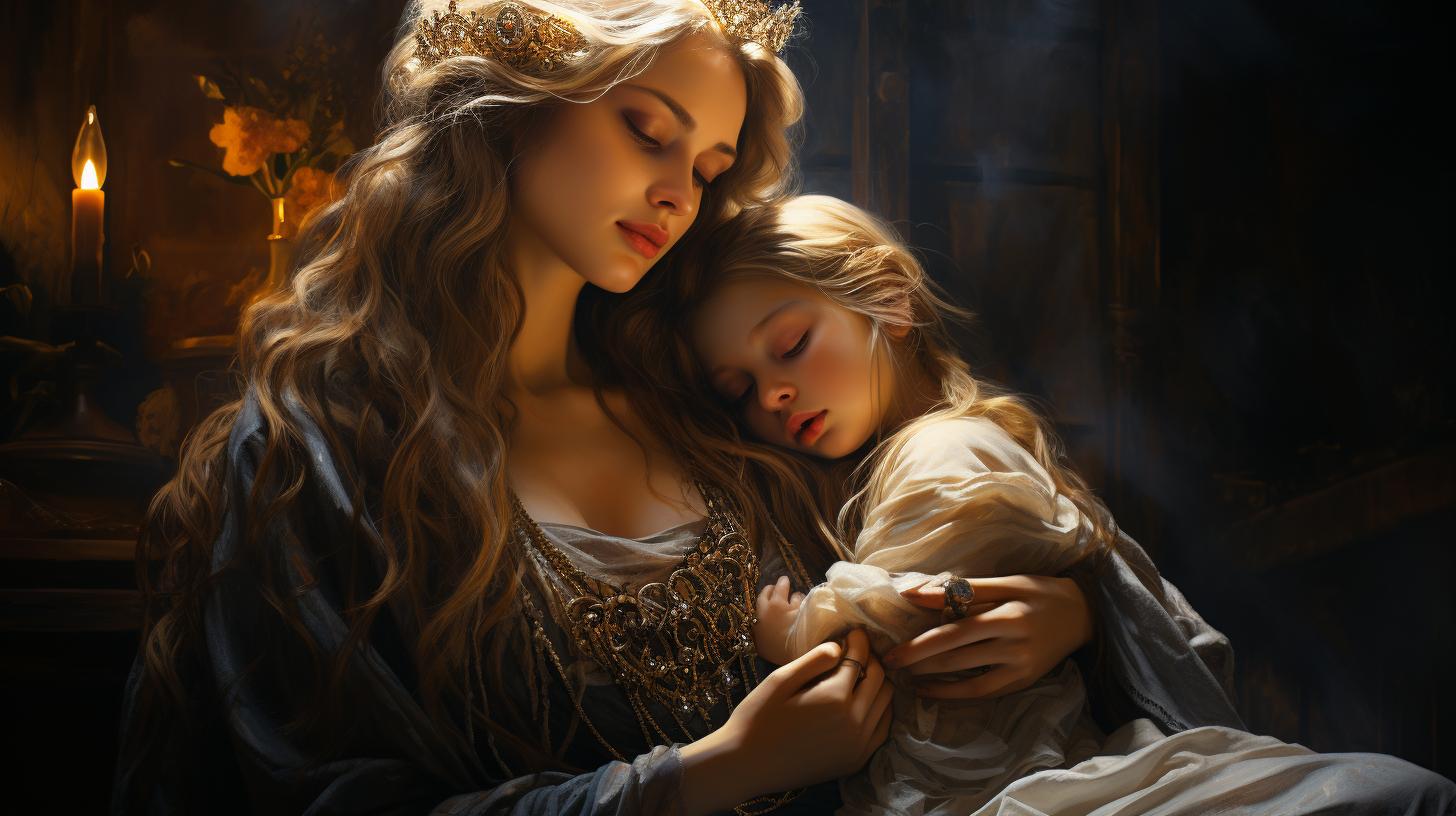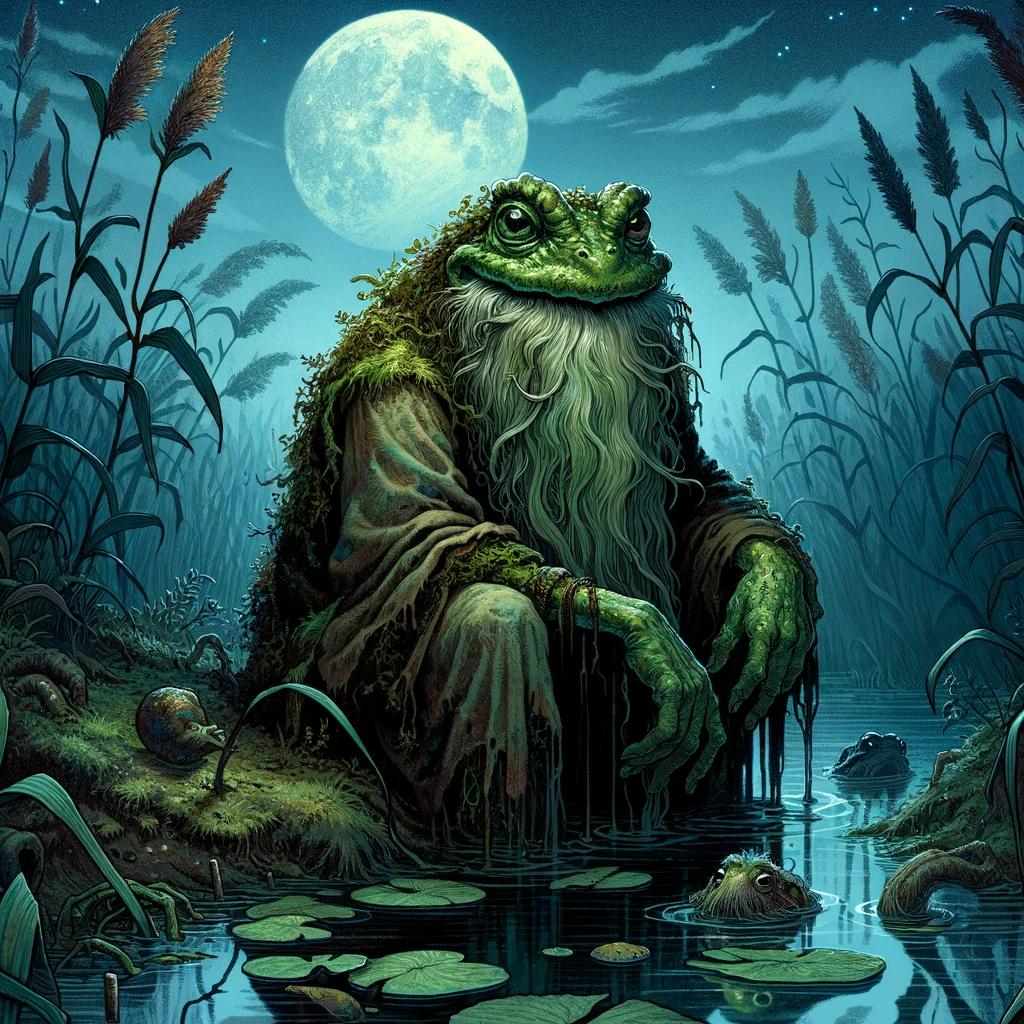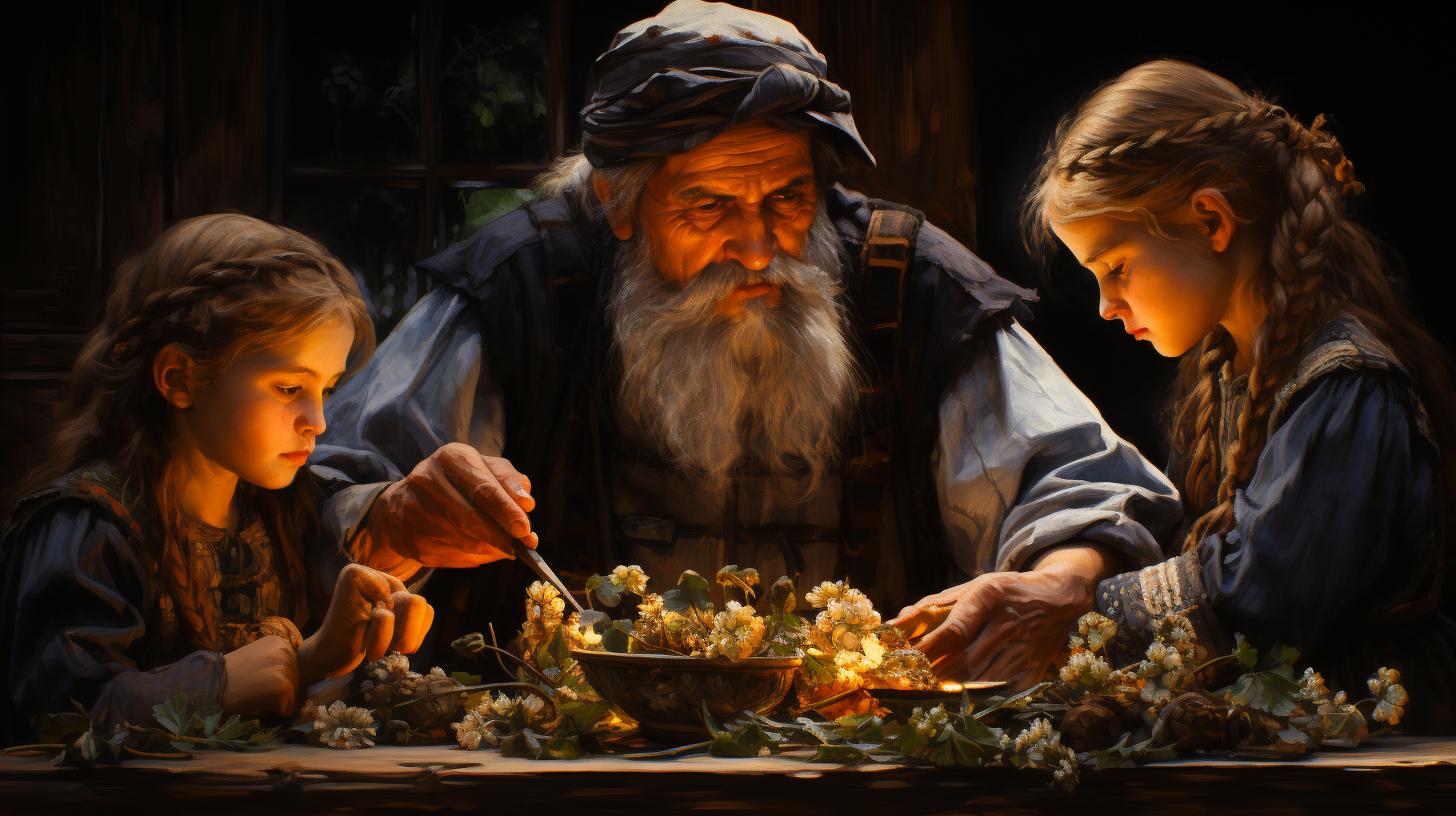Dodola Slavic Goddess: Unveiling the Ancient Rain-Bringing Deity
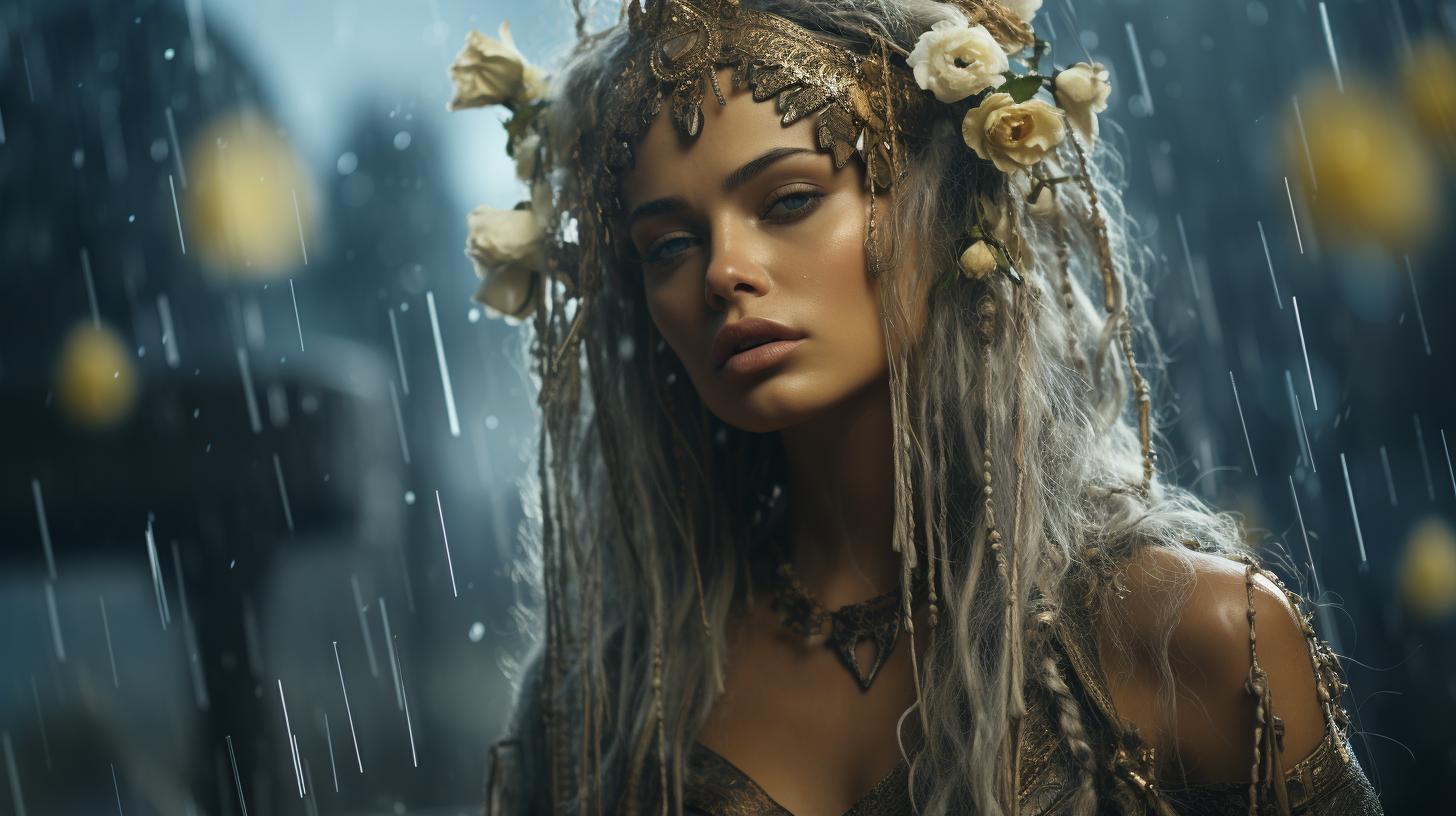
Dodola, the Slavic goddess, holds a significant place in ancient mythology and beliefs. Associated with rain and fertility, Dodola’s origins can be traced back to pre-Christian times, where she held a strong connection to the Slavic thunder god, Perun. Through rituals and ceremonies, Dodola’s vital role in agricultural practices was celebrated and honored.
Today, her influence continues to inspire art, literature, and cultural celebrations, preserving her legacy for future generations. In this article, we explore the mysteries surrounding Dodola, her symbolic representations, and the cultural significance she holds within Slavic communities.
The Origins of Dodola: An Exploration of Slavic Mythology
Slavic mythology has deeply rooted origins that can be traced back to the influence of the Proto-Indo-European belief system. Within this rich tapestry of beliefs, Dodola emerges as a significant figure, embodying the essence of nature, fertility, and rain.
As a pre-Christian deity, Dodola holds a revered place in Slavic folklore and traditions, symbolizing the celestial powers of the natural world. Her connection to the mighty Slavic thunder god, Perun, is a testament to her central role in the mythological pantheon.
Proto-Indo-European Influence on Slavic Beliefs
The beliefs and practices of the ancient Proto-Indo-European civilization had a profound impact on the development of Slavic mythology. Through linguistic and comparative studies, scholars have been able to identify striking similarities between the religious beliefs of various Indo-European cultures, including those of the Slavic people.
This connection provides valuable insights into understanding the roots and significance of Dodola and her place within the larger Slavic belief system.
Dodola as a Pre-Christian Deity
Dodola predates the arrival of Christianity in the Slavic lands, positioning her as a key figure in the pre-Christian era. As a beloved goddess, she was revered for her role in ensuring fertile harvests, an abundant rainfall, and overall agricultural prosperity.
Dodola’s veneration by ancient Slavic communities demonstrates the profound reverence they held for the forces of nature and their understanding of the symbiotic relationship between humanity and the natural world.
Dodola’s Connection to the Slavic Thunder God, Perun
Dodola’s close association with the powerful Slavic thunder god, Perun, underlines her significance in Slavic mythology. Perun, known for his mastery over thunder and lightning, stands as a symbol of strength and protection.
Together, Dodola and Perun form a divine union that represents the harmonious and interdependent relationship between rain and thunder, fertility and power. Their connection highlights the integral role that Dodola plays in ensuring the balance and well-being of the natural world.
Dodola: The Slavic Goddess of Rain and Fertility
Dodola, revered as the Slavic goddess of rain and fertility, played a vital role in the agricultural practices of ancient Slavic communities. Her divine presence was believed to bring abundance and prosperity to the land, ensuring bountiful harvests and the continuation of life itself.
Dodola’s Role in Agricultural Practices
Within the realm of agriculture, Dodola held a significant position as the provider of rain and essential moisture for crops. Farmers depended on her benevolence to nurture their fields and ensure the success of their crops.
She was invoked through rituals and offerings, beseeching her to bless the earth with life-giving rain.
Rituals and Ceremonies Dedicated to Dodola
Devoted followers of Dodola expressed their veneration through elaborate rituals and ceremonies. These sacred practices, passed down through generations, involved intricate dances, chanting, and music, all designed to invoke Dodola’s presence and seek her favor.
Offerings of milk, round cakes, flowers, fresh fruits, and vegetables were presented to her, symbolizing the fertility and abundance of the land.
Dodola’s Association with Rain and the Bringing of Life
Dodola’s close connection with rain highlights her role as a life-bringer.
Rain, essential for the growth and sustenance of crops, symbolized the nourishing power of Dodola’s presence. The belief in her ability to bring rain not only ensured agricultural success but also represented an acknowledgment of the interconnectedness between humans and nature.
Recognizing Dodola’s significance unveils a profound understanding of the ancient Slavic reverence for the natural forces that sustain and enrich life. Through their rituals, prayers, and offerings, these communities demonstrated their deep-rooted reliance on Dodola’s blessings and her integral role in the cycle of fertility and abundance.
Dodola and Perun: The Divine Union
The divine relationship between Dodola and Perun holds significant importance in Slavic mythology. Their union represents the interconnectedness of rain and thunder, two natural elements vital to the fertility and sustenance of the land.
This section delves into the mythological connection between Dodola and Perun, exploring their symbolic representation and the ritualistic practices associated with them.
Mythological Relationship Between Dodola and Perun
The mythological stories of Dodola and Perun depict them as a divine couple, representing the harmony between rain and thunder. Dodola, the goddess of rain and fertility, is seen as the wife or consort of Perun, the Slavic god of thunder and lightning.
Their relationship represents the cyclical nature of weather and its vital role in agricultural abundance. They are revered as the primary deities responsible for the well-being of crops and the prosperity of the community.
The Symbolic Representation of Rain and Thunder
Rain and thunder are powerful symbols in Slavic mythology, embodying the life-giving forces of nature. Rain, personified by Dodola, symbolizes abundance, growth, and the renewal of life. Thunder, associated with Perun, represents strength, power, and protection.
Together, they form a balanced cosmic union, ensuring the fertility and prosperity of the land. The symbolism surrounding rain and thunder is deeply intertwined with the agricultural cycles and the spiritual beliefs of Slavic communities.
Ritualistic Practices Honoring Dodola and Perun
Devotional practices and rituals dedicated to Dodola and Perun play a significant role in Slavic culture. These rituals aim to honor and appease the deities, seeking their blessings for abundant rainfall and agricultural prosperity.
Rituals often involve offerings of food, libations, and prayers accompanied by songs, dances, and processions. By participating in these rituals, the community seeks to establish a harmonious connection with the divine, ensuring the well-being of their crops and the overall prosperity of their society.
Dodola Rituals and Practices in Slavic Culture
In Slavic culture, the worship of Dodola is deeply rooted in traditions and customs that have been passed down through generations. These rituals and practices serve to honor and invoke the powerful rain-bringing deity.
Let’s explore some of the key aspects of Dodola worship in the Balkans and Central Europe, as well as the elements and symbols used in Dodola rituals and the vibrant festivals and celebrations held in her honor.
Dodola Worship in the Balkans and Central Europe
The Balkans and Central Europe have longstanding traditions of Dodola worship. Communities hold special reverence for this goddess, recognizing her crucial role in providing rain and ensuring fertile harvests. Dodola rituals often involve a collective gathering of villagers, who join together in celebrating her presence and seeking her blessings for agricultural abundance.
These rituals act as a vital link between the people and the natural world.
Elements and Symbols Used in Dodola Rituals
- Water and Rain: Water is a central element in Dodola rituals, symbolizing the life-giving force of rain. It is often poured or sprinkled during ceremonies to invoke Dodola’s power.
- Flowers and Plants: Fresh flowers, greenery, and plants play a significant role in Dodola rituals, representing fertility and growth.
- Circular Symbols: Circles are commonly used as symbols associated with Dodola, representing the cyclical nature of life, death, and rebirth.
- Offerings: Offerings of fruits, vegetables, bread, and milk are made to Dodola to honor her and express gratitude for her blessings.
Festivals and Celebrations in Honor of Dodola
Festivals dedicated to Dodola are vibrant and joyous occasions that bring communities together.
These celebratory events often feature lively music, traditional dances, and colorful processions. The festivals serve as a way to express gratitude for the fertility bestowed by Dodola and to pray for continued abundance.
They provide an opportunity for people to showcase their cultural heritage and reinforce their connection with their Slavic roots.
Throughout the Balkans and Central Europe, the rituals, symbols, and festivals associated with Dodola offer a glimpse into the rich and vibrant tapestry of Slavic culture.
These ancient practices continue to bind communities together, strengthen their ties with the natural world, and ensure the continuity of traditions for generations to come.
Dodola’s Influence and Legacy
Dodola’s Impact on Slavic Folklore and Traditions
The legendary Dodola holds a significant place in Slavic folklore and traditions, permeating various aspects of cultural practices. Stories and myths surrounding Dodola are passed down through generations, shaping the belief systems and oral traditions of Slavic communities.
Dodola’s association with rain and fertility makes her an essential figure in agricultural practices, where her presence symbolizes hopes for bountiful harvests and prosperity.
Similarities and Connections to Greek and Other Mythologies
Fascinatingly, similarities and connections can be drawn between Dodola and mythological figures from other cultures, particularly Greek mythology.
Scholars have noted parallels between Dodola and Greek goddesses such as Demeter and Persephone, further highlighting the interconnectedness of ancient mythologies. These connections offer insights into the cross-cultural influences and shared human experiences that shape our understanding of divine figures.
The Revival and Preservation of Dodola Worship in Modern Times
Despite the passage of centuries, Dodola’s worship and reverence have endured, showcasing the resilience of Slavic cultural heritage. In recent years, there has been a notable revival of interest in Dodola, driven by efforts to preserve ancient traditions and promote cultural heritage.
Festivals, performances, and art exhibitions dedicated to Dodola continue to celebrate her influence, keeping her presence alive for future generations to appreciate and connect with their ancestral roots.
Dodola in Modern Society
Dodola’s influence extends beyond ancient folklore and traditions, making its mark on various aspects of modern society.
From art and literature to popular culture, Dodola continues to captivate and inspire individuals today. Let us explore Dodola’s presence in different realms:
Dodola’s Presence in Art, Literature, and Popular Culture
Dodola’s mythological significance has found its way into artistic expressions, with numerous artworks depicting the goddess in various forms.
Paintings, sculptures, and other visual mediums often portray Dodola as a symbol of fertility and rain, reflecting her role in Slavic folklore.
In the realm of literature, Dodola serves as an evocative character in myths, legends, and modern literary works.
Authors and poets draw inspiration from Dodola’s symbolism, weaving her into tales of nature, rain, and mystical connections.
Popular culture has also embraced Dodola’s allure. Films, TV shows, and music often reference Slavic deities, incorporating Dodola’s essence into their storytelling.
Dodola’s captivating presence continues to captivate audiences and spark imagination.
Contemporary Interpretations and Representations of Dodola
In the modern era, Dodola has evolved and adapted to changing cultural landscapes. Artists and scholars explore new ways to interpret and represent Dodola, infusing their own creativity and perspectives into the goddess’s timeless narrative.
Contemporary interpretations of Dodola often incorporate feminist perspectives and ecological themes, highlighting her connection to nature, fertility, and the empowerment of women. These fresh interpretations breathe new life into Dodola’s legacy, allowing her symbolism to resonate with modern audiences.
Dodola on Online Platforms: Exploring the Connection
The digital age has opened up new avenues for exploring and connecting with Dodola’s mythology. Online platforms, such as social media and websites, provide spaces for enthusiasts to share insights, art, and research about Dodola and Slavic folklore.
Communities dedicated to Dodola’s worship and followers of Slavic traditions utilize online platforms to gather, discuss, and keep the goddess’s traditions alive. These digital communities contribute to the preservation and revival of Dodola worship in the modern world.
To further delve into Dodola’s online presence, individuals can explore dedicated websites, forums, and blogs that offer in-depth information, personal experiences, and research on the goddess and her significance in Slavic culture.
Online platforms continue to foster knowledge-sharing and appreciation for Dodola among enthusiasts worldwide.
Unveiling the Mysteries: Seeking a Deeper Understanding of Dodola
As we delve into the enigmatic realm of Dodola, we embark on a quest to unravel the ancient symbols and meanings associated with this Slavic goddess. With rich historical references and cultural significance, Dodola’s essence transcends time, leaving behind traces for us to decipher.
Exploring Dodola’s Ancient Symbols and Meanings
Delving into the realm of Dodola unveils a tapestry of ancient symbols and meanings deeply embedded in Slavic culture. From raindrops symbolizing fertility to floral motifs denoting abundance, each symbol offers insight into the mystical realm of Dodola’s influence on nature and human existence.
Insights from Archaeological Discoveries and Historical Research
Archaeological excavations and historical research shed light on Dodola’s presence throughout history. Unearthed artifacts, divine representations, and sacred sites provide valuable insights into the worship and rituals dedicated to Dodola, revealing a glimpse into the spiritual practices of ancient Slavic communities.
The Continuation of Dodola’s Worship in Slavic Communities
In present-day Slavic communities, the veneration of Dodola continues to resonate, bridging the gap between ancient traditions and contemporary belief systems. Ceremonies, festivals, and prayers dedicated to Dodola serve as a testament to the enduring cultural and spiritual connection to this alluring rain-bringing deity.
Cultural Significance and Importance of Dodola
Dodola, the Slavic goddess of rain and fertility, holds immense cultural significance and plays a vital role in the traditions and beliefs of Slavic communities. Her worship represents a symbol of resilience and a deep connection to nature, embodying the fundamental essence of life and growth.
Dodola as a Symbol of Resilience and Connection to Nature
Dodola’s association with rain and fertility positions her as a symbol of resilience in the face of adversity. As a goddess of rain, she represents the life-giving force that sustains crops and ensures abundant harvests.
Her presence in agricultural traditions reflects the dependence of Slavic communities on the natural world and their ability to adapt and thrive in challenging conditions.
Furthermore, Dodola embodies a deep connection to nature.
The rituals and ceremonies dedicated to her highlight the intimate relationship between humans and their environment. Through the worship of Dodola, Slavic communities express gratitude for the bounties of the earth and seek to maintain harmonious coexistence with the natural world.
Dodola’s Role in Maintaining Social Cohesion and Identity
Dodola’s significance extends beyond the realm of weather and agricultural prosperity. She also serves as a unifying figure within Slavic communities, fostering social cohesion and strengthening cultural identity. The rituals and festivals dedicated to Dodola bring people together, fostering a sense of belonging and shared purpose.
By participating in Dodola’s rituals, communities reinforce their cultural heritage and pass down traditions from generation to generation. These practices help to preserve a collective memory and strengthen the bonds that hold communities together, fostering a sense of unity and solidarity.
Celebrating and Preserving Dodola’s Legacy for Future Generations
The celebration and preservation of Dodola’s legacy is crucial for ensuring the vitality of Slavic culture and its unique traditions. By recognizing and honoring Dodola’s cultural significance, communities can continue to pass down her stories and rituals to future generations, maintaining a strong connection to their ancestral roots.
Through art, literature, and cultural events, Dodola’s legacy can be celebrated and shared with a wider audience, promoting a deeper appreciation for the rich tapestry of Slavic mythology and belief systems.
Embracing Dodola’s legacy ensures that her wisdom and importance endure, enriching the cultural fabric of Slavic communities for years to come.
.












